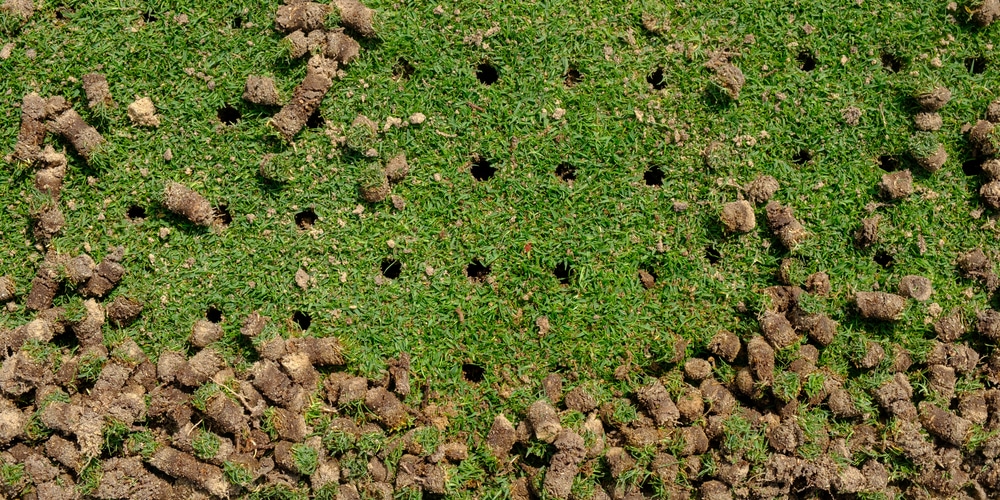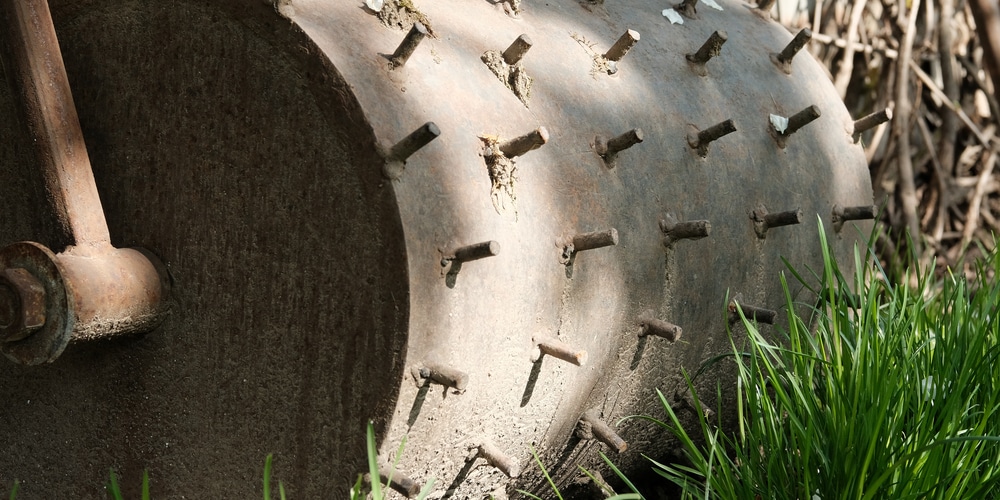Aerating a lawn is integral to keeping it healthy and looking great. But many people don’t know how to do it properly, or they think it’s too much trouble. Aerating can be done in various ways and helps to maintain grass health by allowing oxygen, water, and nutrients to get to the plant’s roots. This article will show you how to aerate your lawn quickly and easily without making a mess. We’ll also discuss whether you should pick up plugs after aerating.
Should I Pick up Plugs After Aerating?

There are two schools of thought when it comes to picking up the plugs you get from aerating. Some people think leaving them on your lawn as fertilizer is a good way to encourage root growth and stronger grass.
If you water your grass well after aerating, the little plugs that are left behind will start to break down. It’s likely that you won’t even be able to see them in just four or five days. Leaving the plugs where they are can help improve your lawn’s nutrient balance. The soil plugs will also contain microscopic organisms, which are beneficial and should be left on your lawn.
However, some people feel that leaving the plugs lying around looks messy and inconvenient and will simply rake them up instead. Raking the plugs up after aerating will allow you to have a tidy law; you won’t have to wait for the plugs to dissolve for your yard to look its best.
Ultimately, whether or not you pick up the plugs is a personal choice. Both options have pros and cons, so you should consider your preferences before deciding what is best for your lawn.
If you decide to rake up the plugs, it’s a good idea to wait a couple of hours for them to dry out and harden. This will make them easier to sweep or rake up. You can then add the plugs of sod to your compost pile.
Even if you decide to leave the plugs of soil, it’s a good idea to move any away from walkways and paths. You don’t want to have excess soil build up in these areas. The plugs can be swept away from paths and put back into the middle of your lawn.
How to aerate a lawn
There are a few different ways to aerate your lawn, but the most common technique is to use an aerator tool. This is usually a metal cylinder that you push into the ground and pull it out again. The cores of soil that come up with it get left behind on top of your grass.
Gas or diesel-powered aerators are also available, which leave plugs behind on your soil.
You could aerate your lawn manually using a garden folk or aeration shoes to avoid plugs. These will leave tiny holes in your lawn without removing plugs.
As well as aerating your lawn, you can remove any thatch built up on the surface using a rake. After doing these jobs, it’s also a good idea to give your grass some fertilizer and a good amount of water.
When to aerate a lawn
Some people think that aerating is only necessary in the spring, when the ground is just beginning to thaw and become soft again. But this isn’t necessarily true. You can actually aerate your lawn at any time of year, as long as it is not frozen solid.
Conclusion
In summary, if you want to keep your lawn looking healthy and beautiful, you must aerate it regularly. This can be easily done using an aerator tool and at any time of year when the ground is not frozen. Whether you choose to pick up the plugs after aerating is a personal decision, but either way, your lawn will benefit from this simple maintenance routine.
